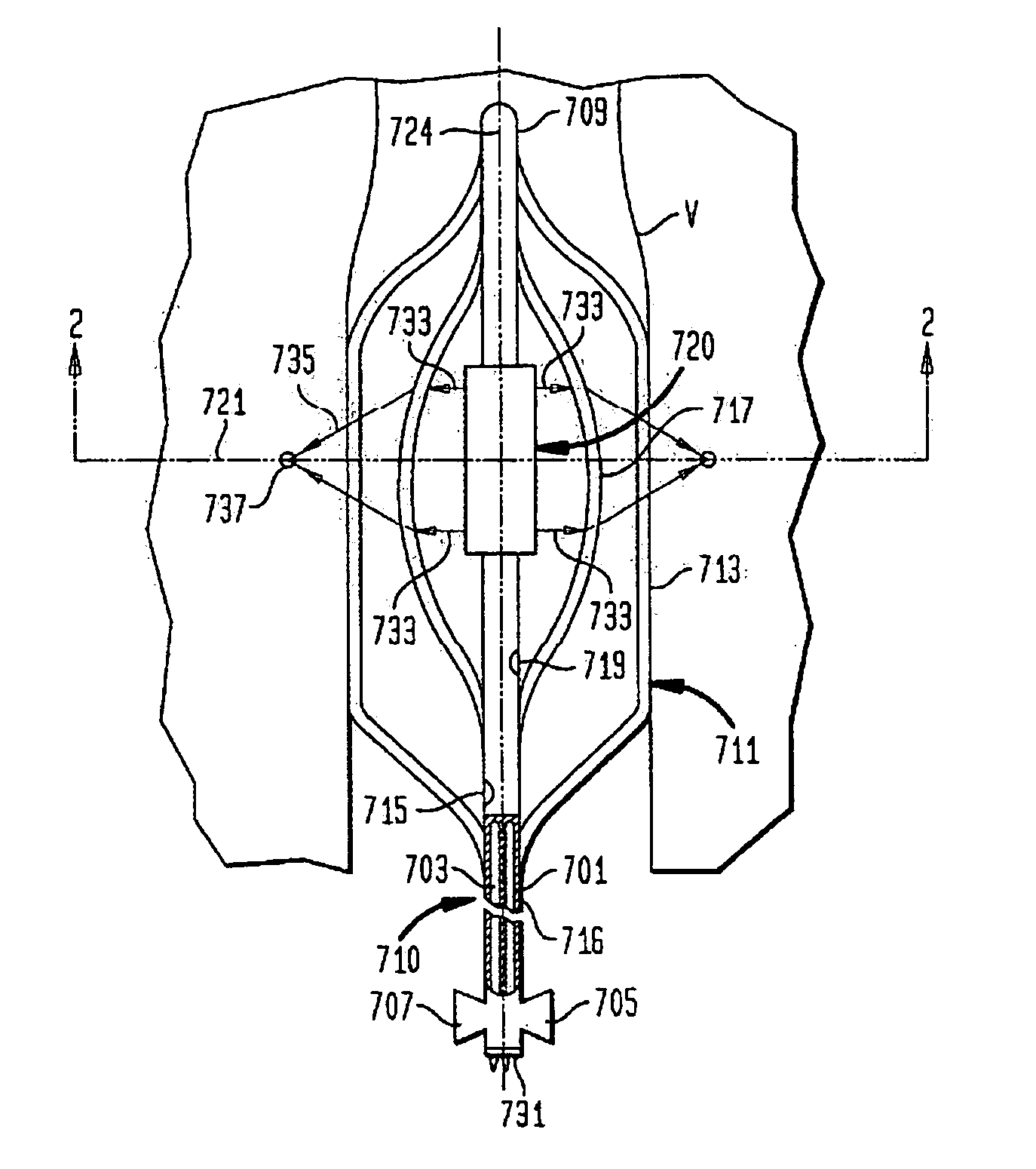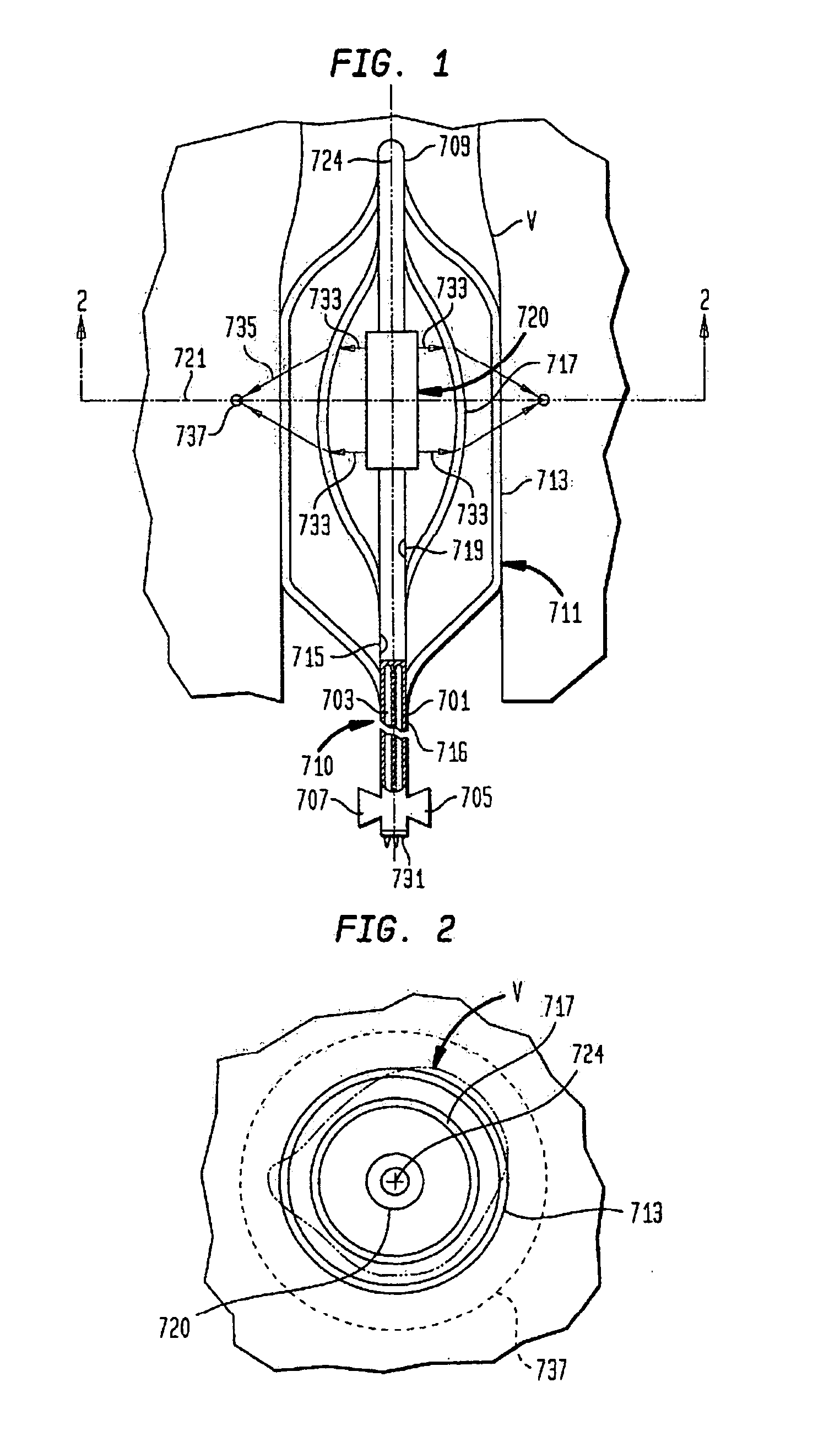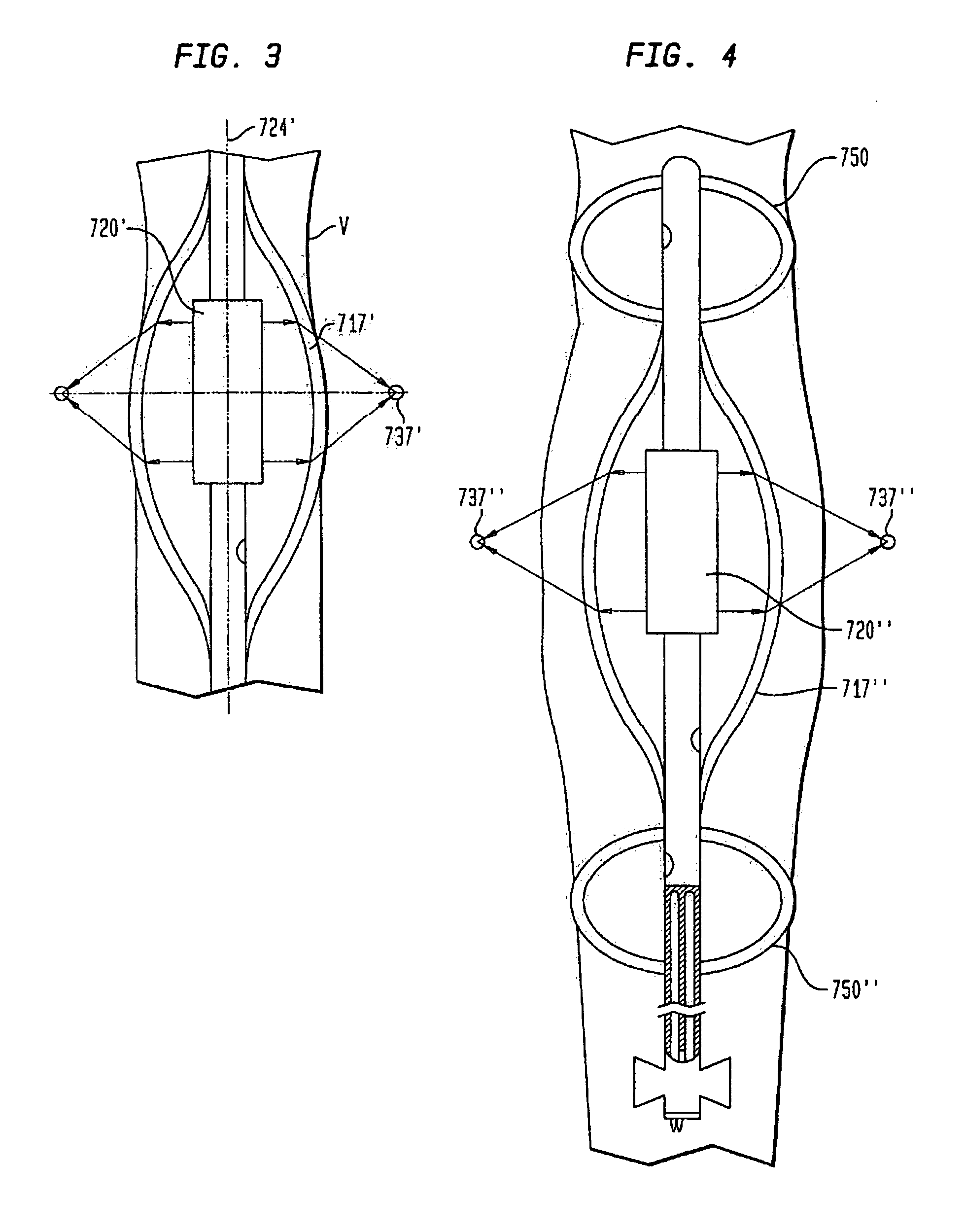Energy application with inflatable annular lens
a technology of annular lens and energy application, which is applied in the field of medical procedures, can solve the problems of stenosis of pulmonary vein or thrombosis, formation of blood clots, scars extending along the path, etc., and achieves the effects of convenient ablation or other thermal treatment, efficient and precise thermal treatment, and rapid heating of a ring-like portion
- Summary
- Abstract
- Description
- Claims
- Application Information
AI Technical Summary
Benefits of technology
Problems solved by technology
Method used
Image
Examples
Embodiment Construction
[0025] Apparatus according to one embodiment of the invention (FIGS. 1 and 2) includes a probe structure 710 incorporating a single multi-lumen catheter 716. A first fitting 705 at the proximal end of the catheter communicates with lumen 701 whereas another fitting 707 at the proximal end of the catheter communicates with lumen 703. An emitting element 720 having an emitting surface generally in the form of a surface of revolution is mounted to catheter 716 adjacent the distal end 709 of the catheter. The emitting element defines a medial plane 721 perpendicular to central axis 724 midway between the proximal and distal ends of the emitting element. A bearing balloon 711 surrounds the emitting element. The bearing balloon is formed from a flexible material such as a polymer. Materials similar to those used to form noncompliant balloons in the angioplasty art, such as films of PET, PETG, nylon, polyurethane, polyethylene and other polymers can be used. Typically, such balloons are in...
PUM
 Login to View More
Login to View More Abstract
Description
Claims
Application Information
 Login to View More
Login to View More - R&D
- Intellectual Property
- Life Sciences
- Materials
- Tech Scout
- Unparalleled Data Quality
- Higher Quality Content
- 60% Fewer Hallucinations
Browse by: Latest US Patents, China's latest patents, Technical Efficacy Thesaurus, Application Domain, Technology Topic, Popular Technical Reports.
© 2025 PatSnap. All rights reserved.Legal|Privacy policy|Modern Slavery Act Transparency Statement|Sitemap|About US| Contact US: help@patsnap.com



